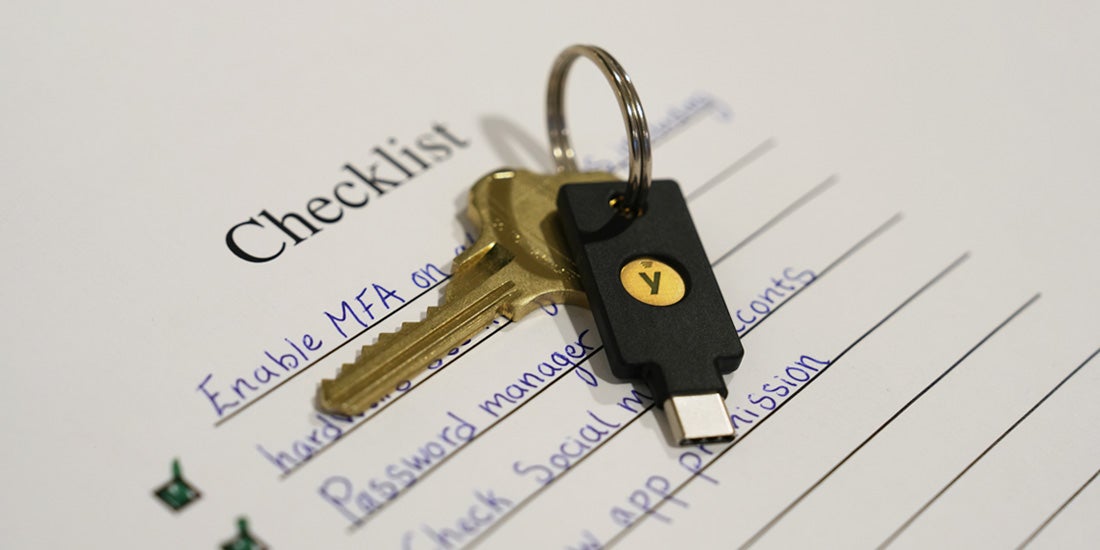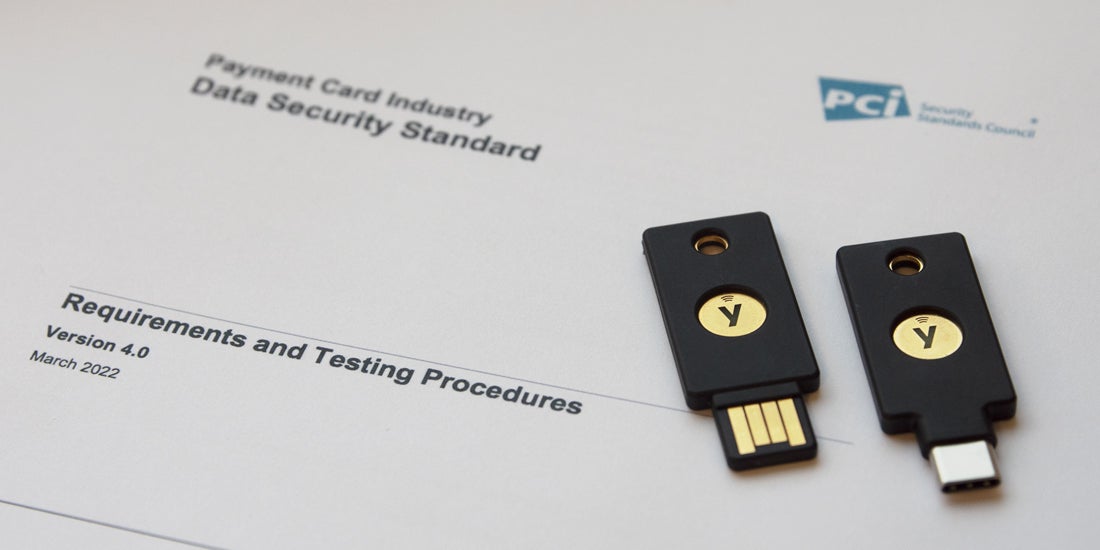Cybersecurity attacks continue to be on the rise, making news headlines almost daily. With the kick-off of Cybersecurity Awareness Month on October 1, it’s a good reminder that all MFA is not created equal. We’re increasingly seeing that hackers aren’t breaking in, but instead are now logging in with phishing and social engineering attacks against companies, governments and individuals at an all time high.
With the goal of better understanding how companies around the world are approaching cybersecurity measures, we partnered with industry experts at Censuswide on its inaugural survey: Yubico’s State of Global Enterprise Authentication Survey 2022. The survey results highlight the critical importance of using modern phishing-resistant MFA to protect organizations against increasingly sophisticated cyberattacks we’re seeing unfold. Insights were captured from 16,000+ employees across a variety of enterprises in eight countries including the UK, United States , Australia, New Zealand, Singapore, France, Germany and Sweden.
Those surveyed, which ranged from entry-level employees to executives, from sole traders to 2000+ employee enterprises, were asked about their perceptions and perceived challenges of MFA, security tools and internal security practices at their organization, as well as their recent experiences with cyberattacks.
The research found that while employees and enterprises across the globe are increasingly aware of the risks of cyber crime, many still leave themselves vulnerable by using legacy authentication methods and by failing to follow cybersecurity best practices.
The survey revealed numerous interesting global trends around cybersecurity authentication and MFA, including:
- 59% of employees still rely on username and password as their primary method to authenticate into accounts
- Nearly 54% of employees admit to writing down or sharing a password
- 22% of those surveyed still think username and password is the most secure method of authentication
- 61% think their organization needs to adopt modern phishing-resistant MFA like security keys and 79% of VP-level staff want their organization to upgrade to phishing-resistant MFA
- More than 54% of employees are not required to go through cybersecurity training on a frequent basis
- Over the last 12 months, nearly 57% admit to using a work issued device for personal use
- Within the last 2 years, nearly 40% of survey respondents admits to having broke their mobile phone and nearly 30% have lost it (a device organizations commonly use to authenticate)
The report explores many facets of modern enterprise authentication, highlighting the severe consequences of cyberattacks. These results not only show the continued reliance on legacy MFA solutions like one-time passwords, but they are a stark reminder of how far the enterprise still has to go to adopting and standardizing phishing-resistant MFA tools.
Additional details on the global findings can be found in the report summary here, but next, we’ll take a deeper look at the notable takeaways from various countries – including similarities and differences. While there are clear trends on a global scale when it comes to MFA and cybersecurity as a whole, it’s interesting to see how countries differ when it comes to perceptions and actions around cybersecurity practices.
A deep dive on cybersecurity and authentication trends by country
As referenced previously, the survey found that username and passwords by far are the most common ways for employees to authenticate into their business accounts (59% globally). Commonly across all countries, behind usernames and passwords are mobile SMS-based authentication, followed by password managers.
An interesting finding was that the use of hardware authenticator keys, such as YubiKeys, are increasingly becoming a standard in the enterprise – especially in the US (36%). Singapore (25%) and Germany (21%) followed as leaders when it comes to adopting the phishing-resistant MFA tool.
To make the internet safer for everyone, leadership is required to take proper action regarding cybersecurity efforts, and effort toward this is most visible in the United States. Yubico asked respondents, “How often is cybersecurity and how to prevent attacks discussed at board meetings or other executive level meetings?” It was found that US enterprises lead all nations’ surveyed for discussion of cybersecurity at board meetings, security training and for leaders regularly discussing cybersecurity issues with employees. Singapore came in second, followed by France.
We asked respondents what they “think the most secure method of authentication is,” and surprisingly, over 22% globally said usernames and passwords. Taking a look at the data split out by country, we see this thought is fairly even across the board. We also see a common theme across mobile TOTP/ push authenticator apps and mobile SMS based authentication, in that because these tools are the most commonly offered by businesses to employees, they translate as the most secure method of authentication for business and personal lives.
With the sophisticated phishing and smishing cyberattacks that are happening frequently, we asked respondents, “Which types of cybersecurity attacks have you been exposed to at work in the last 12 months, if any?” Almost 60% of global respondents stated they have not been exposed to a cybersecurity attack at work in the last 12 months. Given the recent rise in cyberattacks globally, this finding highlights an important trend around cybersecurity education at the enterprise level.
Among all countries, the United States and Singapore are clearly outliers when it comes to spotting a modern cyber threat at work – often in the form of phishing via messaging apps, email spoofing, and phishing text messages, which directs users to a fake website that matches the look and feel of the legitimate site so that victims will enter personal details there. As hackers become better and these attacks become more complex, it’s often becoming harder to spot these attacks from legitimate communications – the end goal of the hacker. This data shows that the US and Singapore are doing an effective job at ensuring all employees – from the top down – understand phishing attacks, can help avoid them and report them when appropriate.
As hybrid work models become a standard across the enterprise, businesses continue facing challenges related to remote work from many sides. The biggest ongoing challenge remains how to tackle cybersecurity – including how to balance the same level of security and protocols from the physical office to employees working remotely around the world. To identify current trends regarding this issue, we asked respondents “whether the organization they work for has different security measures for remote/hybrid and in-office/workspace workers?” Globally, 50% of respondents answered “yes,” but looking across countries, the United States (65%), Singapore (60%) and Sweden (56%) all stood out as having the largest gap of security standard differences between remote and in-office workers.
Read the report here for a breakdown of the global data trends and highlights. We’re not finished yet! We’ll be sharing additional analysis of our findings – be sure to check back our blog soon!





